Enjoying Doodh Poha on the terrace has been a Sharad Poornima ritual we diligently try to follow as much as possible. While growing up, Doodh Poha/Pauva ane Bataka Vada (Rice flakes in milk and Potato fritters) used to be the meal to celebrate the glorious Sharad Poonam night on terrace. The ritual was simple we all (my large joint family) had to get together on the terrace to soak in some cool and soothing moonlight and enjoy the meal. The dim street lights and absence of glittering hoardings allowed us to experience the brilliant light the Sharad Poornima moon brought. Our cities in those days were vertically challenged hence, there were no obstructions of any height. We could see the moon rise and enjoy its gradual progression from a pale orange to mellow white. The light it radiated was enough to lit up our t terraces hence lights were never switched on. As kids, it was a day we looked forward to. It was our responsibility to ferry everything on the terrace. But the first to arrive was the cloth covered pan containing Doodh Poha which, is the integral part of the Sharad Poornima meal. The Doodh Poha has to be left under the moon for a good couple of hours. It has to soak up the goodness of the moon, we were told! The shetranji/cotton mats, mattresses and white sheets were all arranged neatly. It was us, the kids, who were responsible in getting the stuff on to the terrace. The adults enjoyed the meal, lazed out and chatted while we played and ran around it exhausted us. Onvce we had no energy left to continue running around we would throng our Ba and pester her to churn out some interesting stories on ghosts. As the night got nippy and her stories grew scarier, we would cuddle up near her lap and continue to enjoy her thrilling narrations. I still find it hard to decide between the two, who charmed me more, my resplendent Ba whom I had always seen dressed in pure white muslin sarees or the radiant full moon of Sharad Poornima. I often find myself reminiscing over those memorable times.

Sharad Ritu is the season we associate with Autumn. It falls in the months of Aaso/Ashwin to Kartik (September to November of Georgian calendar). Sharad marks the end of monsoon, hence, the days become warmer and nights cooler. The heat of summer and the humidity of monsoons give way to the nip that we relate to pre-winter times. The drastic difference in day and night temperatures brings a lot of illness and thus, Sharad is also associated with sickness. Ayurveda considers Sharad to be a season of breeding illness. It is time when Pitta/acidity aggravates. In the earlier days, the elderly blessed saying, “So Sharad Juo/Jivet Sharad Shatam!” which translates to “May you live to see a 100 autumn/Sharad seasons!”. It transliterates to, if you have lived through a Sharad season you should be fine for rest of the year. The traditional diets during this season were designed to keep the gut healthy by including cooling foods and lite meals. If you notice, we have a series of festivals around this time that require us to observe fasts and eat fating foods. The Sharad Navratri is one of those festivals during which fasts were observed for 9 days, if done properly it helps detox our body.
Sharad Poornima is the day that officially declares the end of monsoon. It is a harvest as well as religious festival celebrated across India. It is the celebration of the day when the moon gets closest to the Earth. Goddess Lakshmi is worshipped on this occasion; farmers seek her blessings to prosper and achieve good harvests for the effort they have put in throughout the year.
Gujarat celebrates Sharad Poornima with its traditional dance of Garba and enjoying Doodh Poha on the terrace under the brilliant moonlight. The scientific or the sattvic reason for combining milk and rice flakes is these are foods believed to reduce the pitta that dominates in our body during the season. Ayurveda says the Sharad Poornima moon rays have several curative properties, so the Doodh-Poha is left under the moonlight for couple of hours to absorb its healing properties. And it is not just the food that needs to absorb the moonlight, but we too are advised to bask under the moon to heal and rejuvenate our body and soul. The precise reason why our wise ancestors thought of these charming concept of spending time on the terrace or perform Garba or organize open to sky outings so that we allow ourselves to absorb the ray of the Sharad Poornima moon before enjoying the Doodh Poha… Isn’t that brilliant!!!
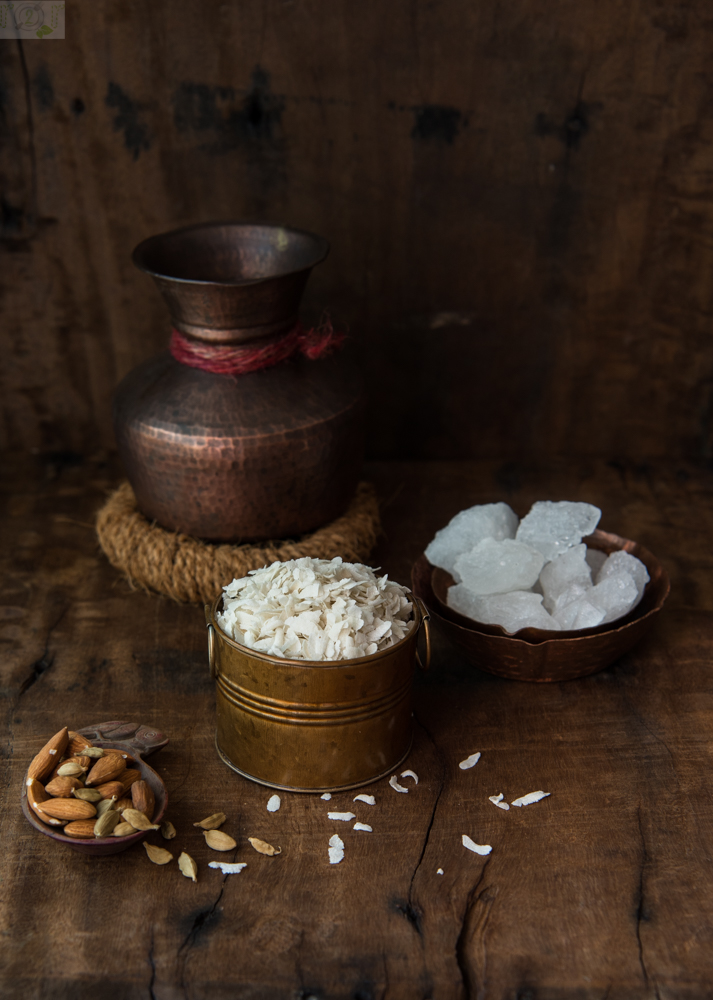
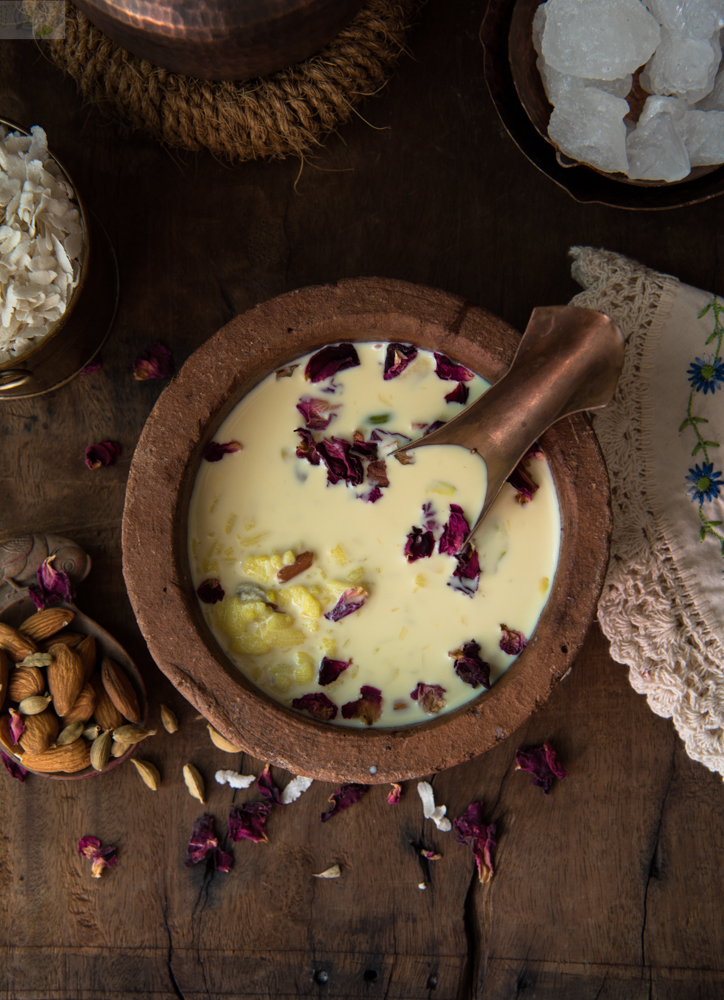
Doodh Poha
Ingredients
- 2 cups milk, full fat
- 1/ 2 cup poha/rice flakes
- khadi sakar/rock sugar, to taste
- 2-3 tablespoons almond slivers
- a pinch of green cardamom powder
- saffron, few strands
Instructions
Put the milk in a thick bottom saucepan and place it on medium flame.
Add the sugar and bring the milk to boil.
Continue to cook the milk till it thickens a bit. Remember to keep stirring continuously.
Simultaneously, wash and drain the poha. Keep aside.
Once the milk has thickened a bit, add the slivered almonds and saffron.
Simmer for 2-3 minutes and turn off the flame.
Add the cardamom powder.
Allow the milk to come to room temperature.
Once the milk has come to room temperature add the washed poha.
Mix well and transfer to serving bowl.
Garnish with rose petals and some slivered almonds.
The Doodh Poha have to be left covered with a muslin cloth under the moon rays for couple of hours before enjoying them.
Notes
Traditionally, Doodh Poha have been sweetened with khadi sakar/misri because of the cooling properties it has. You can replace it with regular sugar if you do not have it handy.
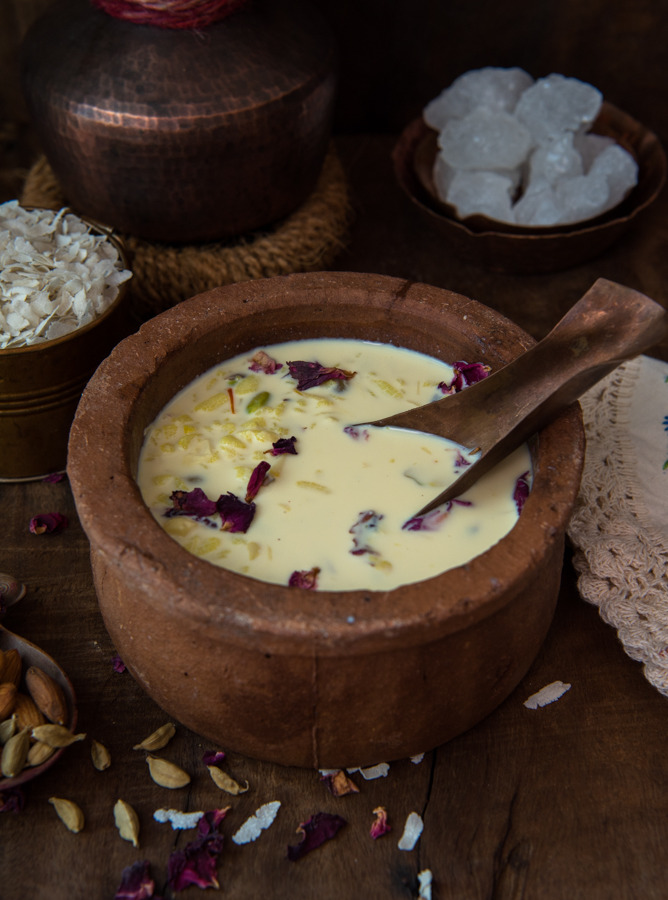


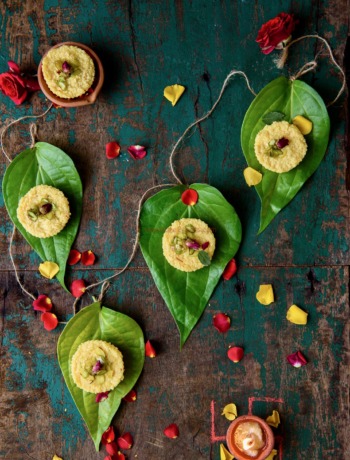
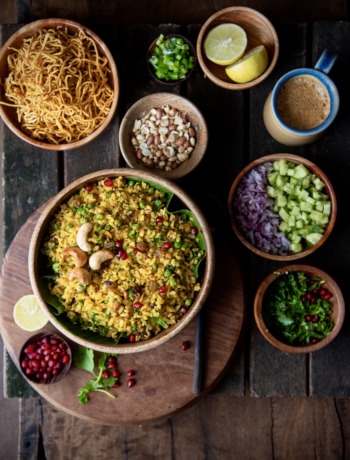
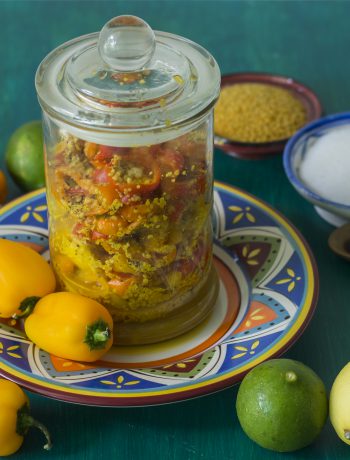
No Comments